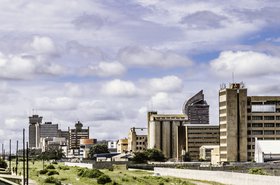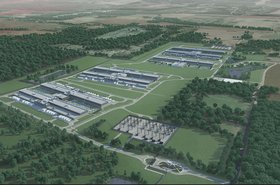Silicon Valley Power expects data center load to almost double by 2035.
Data centers are already the single largest load for the Californian utility, and are only expected to consume more, SVP said in a draft Integrated Resource Plan.
The Santa Clara-based company expects to turn to new renewable sources, including significant geothermal power, to help fuel this growth.
"SVP’s load, primarily data center load, is expected to grow substantially throughout the planning horizon," the plan states. "The forecasted annual load in 2035 almost doubles the current system load, and significant resource additions are needed to meet this growing load."
It added: "Unlike other utilities, SVP’s current and forecasted load is dominated by industrial (data center) load, which has a high load factor (or average load divided by peak load) of 80 percent, meaning that the system demand is relatively constant and there is less ability to shape loads to take advantage of certain resource production, such as low‐cost solar.
"Therefore, SVP’s future portfolio requires both clean resources and firm resources that can ensure there is enough energy to meet system load in all hours."
One of the ways that SVP had planned to help deal with fluctuating renewable loads is through battery storage, and in 2018 the utility was warded a grant of $300,000 from the Bay Area Air Quality Management District to implement a behind‐the‐meter lithium‐ion battery storage pilot project at an undisclosed data center.
However, in 2022 the project's cost doubled from $2.5 million to $5m and it was canceled. "What was salvaged out of the four-year project was the engineering design of a specific switch that allows for easy 'plug‐in' of future microgrids."
While that project failed, SVP is also working with a third party to build and operate up to a 50MW four‐hour (200MWh) utility‐scale lithium‐ion battery energy storage system (BESS) within SVP’s service territory.
Expected to be in commercial operation in late‐2025, SVP would have a twenty-year term with an option to extend another five years. The BESS will charge when there is surplus renewable electricity on the grid. The BESS project is expected to be in commercial operation in late‐2025.
BESS will participate in the California Independent System Operator (CAISO) market, charging the BESS when market prices are low and discharging when they are high.
Data centers can also mean a 'lumpy' load growth profile, as facilities come online and large data center customers suddenly require power. To at least make them more efficient, the utility has an efficiency program targeting data centers with IT server loads greater than 350kW or cooling loads greater than 100 tons.
The utility also expects rapid growth in electric vehicle charging needs, with the number of EVs in the area tripling by 2030.
To support all this, SVP will use a mixture of "solar, wind, storage, and geothermal resources."
With geothermal, the state of California is believed to have as much as 3.3GW in potential power. 1GW is earmarked for the California Public Utilities Commission (CPUC) Mid‐Term Reliability Clean Firm order, and SVP can get up to 15 percent of the remaining 2.3GW.
In the nearer term, the utility believes that it will be able to get geothermal power by 2028, with those projects leading to 347MW of power.
"The baseload operating characteristics of geothermal also align with the relatively high 80 percent load factor (or average load divided by peak load) of the SVP system" due to data centers, the plan states.
The utility presents multiple scenarios for growth: "By 2035, the total resource additions include 290MW geothermal, 590MW wind, 150MW solar, and 110MW storage capacity to meet load growth and the increasing clean energy requirement," it said for its base scenario.
In an accelerated scenario, it would add "330MW geothermal, 740MW wind, 180MW solar, and 100MW battery storage" by 2035.
Finally, in its most ambitious scenario, SVP envisions what it would take to be net zero every hour in 2035. That would require retiring gas plants, or shifting them to green hydrogen.
"By 2035, the total resource additions include 280MW hydrogen (250MW comes from assumed transitions of DVR and LEC [gas plants] and 30MW comes from building new hydrogen plants), 350MW geothermal, 50MW biogas (assumed transition of Gianera), 530MW wind, 150MW solar, and 100MW battery storage."
Carbon capture and long-duration storage are excluded "due to economics."
SVP warned that reaching that third scenario by 2035 at reasonable costs "requires reliance on 'clean firm' emerging technologies that are not available commercially at scale today."
SVP also said that "the existing and planned transmission capacity may not always be sufficient to cover SVP’s forecasted peak load."
But the utility added: "However, with large near‐term forecasted load growth, this IRP provides SVP with a clear pathway for near‐term procurement to meet its needs over the next five to 10 years."







